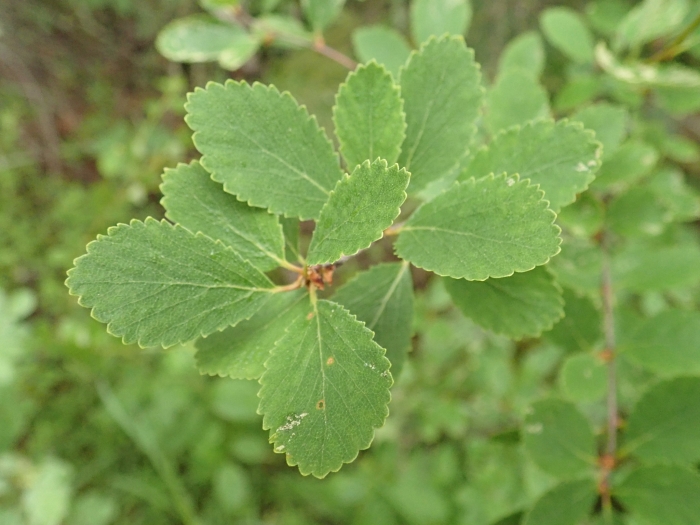Bog Birch
(Betula pumila)
Bog Birch (Betula pumila)
/
/

Rob Foster
CC BY 4.0
Image By:
Rob Foster
Recorded By:
Copyright:
CC BY 4.0
Copyright Notice:
Photo by: Rob Foster | License Type: CC BY 4.0 | License URL: http://creativecommons.org/licenses/by/4.0/ | Rights Holder: Rob Foster | Publisher: iNaturalist | Date Created: 2019-07-07T07:48:53-07:00 |









































Estimated Native Range
Summary
Betula pumila, commonly known as Bog Birch, is a deciduous shrub native to wetland habitats such as bogs, swamps, and marshy areas in the Northern United States and Canada. It typically grows to a height of 1–4 m (3–13 ft) and is characterized by its compact, rounded form. The leaves of Bog Birch are alternate, coarsely toothed, and rounded at the base, with a close arrangement that is more pronounced in slow-growing individuals. During the spring, Bog Birch produces inconspicuous catkins, which are the reproductive structures of the plant. The flowers are not particularly showy, but they are an important source of pollen for early-emerging insects.
Bog Birch is valued for its ability to thrive in wet conditions and is often used in naturalized plantings, rain gardens, and for erosion control in riparian zones. It is also appreciated for its wildlife value, providing food and habitat for various bird species and insects. In cultivation, Bog Birch requires full sun to part shade and prefers consistently moist to wet soils. It is tolerant of a range of soil types, provided they have slow or wet drainage. While generally low-maintenance, it can be susceptible to birch leafminer and should be monitored for infestations.CC BY-SA 4.0
Bog Birch is valued for its ability to thrive in wet conditions and is often used in naturalized plantings, rain gardens, and for erosion control in riparian zones. It is also appreciated for its wildlife value, providing food and habitat for various bird species and insects. In cultivation, Bog Birch requires full sun to part shade and prefers consistently moist to wet soils. It is tolerant of a range of soil types, provided they have slow or wet drainage. While generally low-maintenance, it can be susceptible to birch leafminer and should be monitored for infestations.CC BY-SA 4.0
Plant Description
- Plant Type: Shrub
- Height: 8-12 feet
- Width: 9-15 feet
- Growth Rate: Moderate
- Flower Color: N/A
- Flowering Season: Spring
- Leaf Retention: Deciduous
Growth Requirements
- Sun: Full Sun, Part Shade
- Water: Medium
- Drainage: Slow
Common Uses
Bird Garden, Butterfly Garden, Deer Resistant, Low Maintenance, Rabbit Resistant, Water Garden
Natural Habitat
Wetland habitats such as bogs, swamps, and marshy areas
Other Names
Common Names: American Dwarf Birch , Arctic Dwarf Birch , Low Birch , Swamp Birch , Dwarf Birch , Shrub Birch , Bouleau Nain
Scientific Names: Betula pumila , Betula glandulifera , Betula pumila var. glandulifera , Betula pumila var. renifolia , Betula glandulosa var. hallii , Betula pumila f. hallii , Betula glandulosa var. glandulifera , Betula hallii , Betula pumila var. glabra , Betula nana var. glandulifera
GBIF Accepted Name: Betula pumila L.